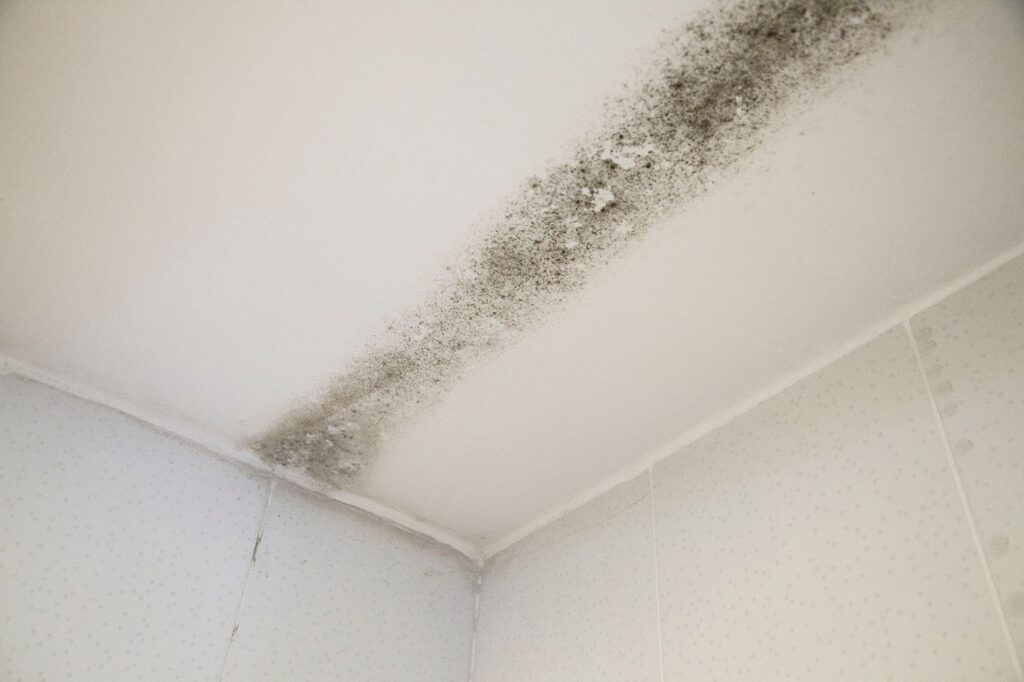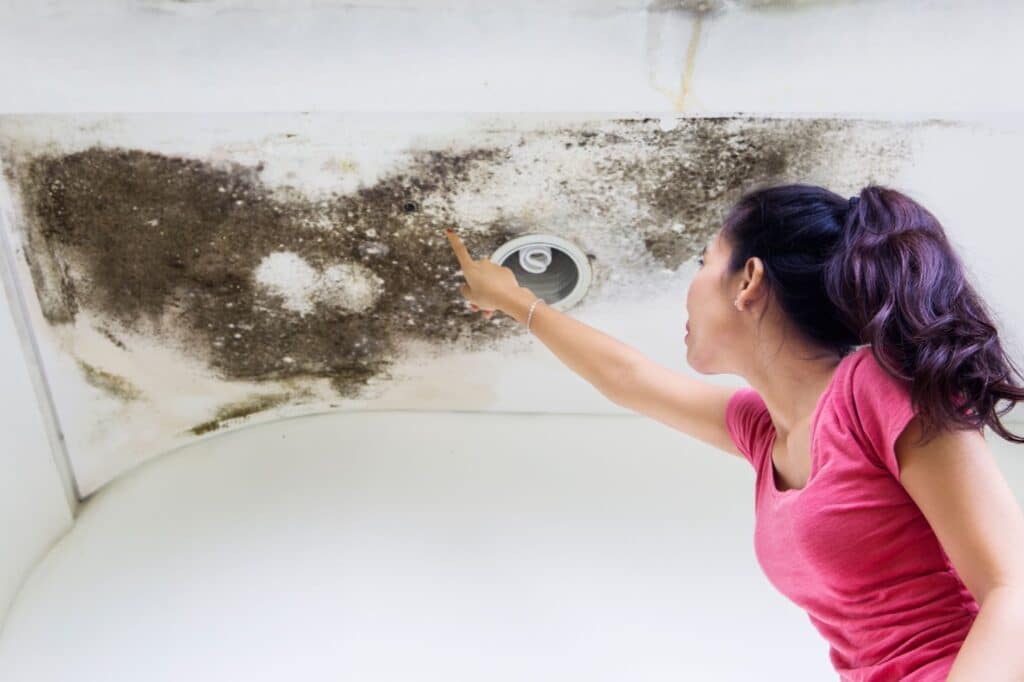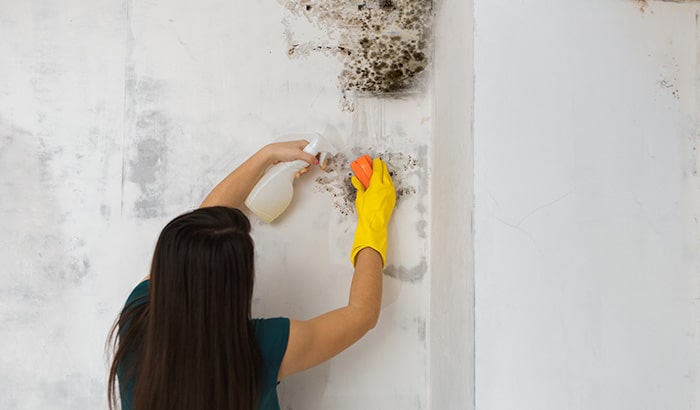If you’re wondering where to look for mold in your home, understanding how to identify and eradicate the problem is fundamental.
When we think of mold growth in our homes, we often picture the usual suspects: damp basements, neglected bathrooms, or areas affected by water leaks. However, mold is a stealthy intruder. Mold lurks in unexpected corners and crevices throughout living spaces.
In this blog post, we’ll explore some surprising hiding spots where mold might take hold so that homeowners won’t be caught off guard the next time they see or smell this unpleasant house guest.
What is mold?
Mold, a member of the fungus family, is found both indoors and outdoors. Out in nature, it serves a crucial role in decomposing dead organic matter and keeping ecosystems healthy. However, indoor mold is a different story. Its presence can lead to health issues such as allergies and illnesses.
Mold thrives in moist environments and grows effectively on various surfaces, including wood, carpet, insulation, paper, and food. It’s essential to prevent indoor mold growth to maintain a safe and healthy living environment.
Signs of mold
When you think of mold, you probably imagine dark, damp spaces with fuzzy patches of growth or green blobs that appear on an old loaf of bread. While all of these characteristics are accurate, mold growth extends beyond mere inconvenience; it poses serious health risks and often compromises the structural integrity of buildings.
Here are some signs you have mold in your home:
- Odor – Mold emits a musty, earthy odor. This smell is typically described as damp, stale, or sometimes even sour. It varies depending on the type of mold present and the materials it’s growing on. Hire a specialist to inspect concealed mold colonies in walls, crawl spaces, or home foundations if you smell mold but don’t see any.
- Water leaks – A slow leak might provide enough moisture to encourage mold growth. Regularly inspect all plumbing connections inside and outside the home, fix leaks as soon as they appear, and work to eradicate mold.
- Squishy floors – Squishy floors are concerning and sometimes a sign you have mold in your home. If certain areas of your floor become mushy due to moisture issues in your subfloor, mold may already be growing there. To guarantee complete removal of the mold infestation, contact a professional.
- Health symptoms – Mold spore inhalation might lead to major health issues, particularly in those with underlying medical disorders. The spores induce respiratory infections and exacerbate asthma symptoms once they enter your lungs. Breathlessness and severe coughing and sneezing are common side effects.
- Discoloration – Discoloration is the most common sign you have mold in your home. Mold is seen as gray, black, green, or blue patches on walls, grout lines, or other surfaces. Look for any streaks of brown, red, or pink. The texture of mold might feel slimy, fuzzy, or powdery. It’s often identified by black water stains on the ceiling, walls, or flooring.

Toothbrush holders
Storing your toothbrush in a glass or ceramic container near the bathroom sink is handy, but here’s the catch: water dripping from the toothbrush creates a prime breeding ground and hiding spot for mold. It loves to hide out there.
To prevent mold from taking over, rinse and dry the inside of your toothbrush holder frequently. And while you’re at it, thoroughly clean your soap dish, including the underside. That way, you’ll keep mold growth in check and maintain a clean bathroom setup.
Under the sink
Underneath most kitchen and bathroom sinks, you’ll find warm, damp, and dark conditions—a mold paradise! To stop mold growth, frequently inspect these areas for any signs of condensation or plumbing leaks. Give the inside of the sink cabinet a good clean using a solution containing hydrogen peroxide or bleach. Regular cleaning will ensure a mold-free environment.
Dehumidifiers
If you’re doing an inspection and wondering where to look for mold in your home, don’t overlook your dehumidifier. It’s a common spot for mold to take hold, especially in the water reservoir or hose.
Cleaning is key to combat mold in your dehumidifier. Make sure to regularly empty, clean, and sterilize the water tanks. If your dehumidifier has a hose, thoroughly rinse and clean it with warm, soapy water. And don’t overlook the filters—clean or replace them according to the manufacturer’s guidelines to trap mold spores effectively.
Dishwashers
Dishwashers are one of the stealthiest hiding spots for mold. Most of us rarely consider dishwashers as possible sources of mold until they break or need to be replaced or serviced. Every dishwasher has two connections underneath it: the water supply and the discharge connection. These are the places where mold and mildew most often originate.
Periodically, the water supply needs to be properly tightened and oiled with the appropriate sealant. Installing the rubber hose and clamp for the discharge connection before the dishwasher is mounted guarantees suitable installation. Over time, hoses deteriorate. It never hurts to check the dishwasher connections if you’re purchasing an older home, particularly if it smells strange when you open the door.
Bathroom mirrors and cabinets
Is there a musty or musky scent in your bathroom? If so, pay close attention to the walls behind the cabinets and mirrors in your bathroom. Because of the retained moisture, hazardous mold develops quickly in these areas and is all too frequent.
Eliminate bathroom humidity by installing ventilation. Vents should be kicked on during all showers to combat excessive moisture. Bathrooms are also vulnerable to plumbing spills, overflows, and leaks, all of which, over time, result in mold damage.
Underneath Flooring
While certain mold strains lurk out of sight, others are easier to spot. Mold is incredibly adaptable and will thrive under floors, remaining unnoticed for years. It’s especially common in homes that have experienced recent water damage.
To minimize the risk of mold growth beneath your flooring, you must keep your home dry and well-maintained. If leaks, floods, or burst pipes occur, take action ASAP. Additionally, clean up any spills on the floor as soon as they occur. Proper ventilation is also key to reducing the risk of mold exposure in your home.

Chimneys
Chimneys are excellent, unsuspecting hiding spots for mold. Water, mud, and other biological debris are gathered in the cracks in brick. Mold grows because of rusty chimney crowns and defective flashing that allows snow and rain to enter.
To combat chimney fold, fix flashing and replace rusty caps first. After that, give your chimney a complete cleaning by hiring a chimney sweep. In addition to cleaning up mold, a yearly chimney sweep maintains your chimney free of harmful creosote and optimizes its performance.
Window sills
Window sills are prone to retaining moisture after rainfall, creating the perfect environment for mold growth. This mold thrives on the windowsill and poses a risk to structural wood and construction components behind the window. Preventing mold formation is crucial, and you can help by ensuring the windowsill is thoroughly dried after a rain shower.
Keep all windows closed during inclement weather to minimize the risk of rainwater entering your home and reduce the chance of mildew and water damage. Additionally, consider washing the windows annually to prevent significant mold and mildew growth.
Laundry rooms
In the laundry room, wet clothes contribute to overall moisture levels. Washing machines generate moisture that creates conditions favorable for mold growth. Despite being perceived as clean areas, laundry rooms are prone to mold if humidity levels are too high, especially if clothes aren’t dried promptly. To reduce the risk of mold, regularly clean your appliances and check for any leaks beneath the washing machine.
Reach out to Black Diamond Water Damage & Disaster Restoration today
Now that you know where to look for mold in your home, who will you call if you spot mold growth? In Utah, mold removal is a Black Diamond Damage & Disaster Restoration specialty.
Count on our mold removal company to do the job well. We serve businesses and homeowners with comprehensive, expert services. We employ state-of-the-art technology, and our staff members have extensive expertise and are committed to giving you outstanding customer service.
When it comes to mold removal, Black Diamond Restoration leads the industry. Being prompt, trustworthy, and efficient in whatever we do is something we like. If you see or suspect mold development in your home, please get in touch with us.
Reach out to Black Diamond Restoration to find out more! We serve the Salt Lake and Utah Valley regions from our base in Murray, Utah. Put Black Diamond Restoration to work right now to repair your home!
toto slot






